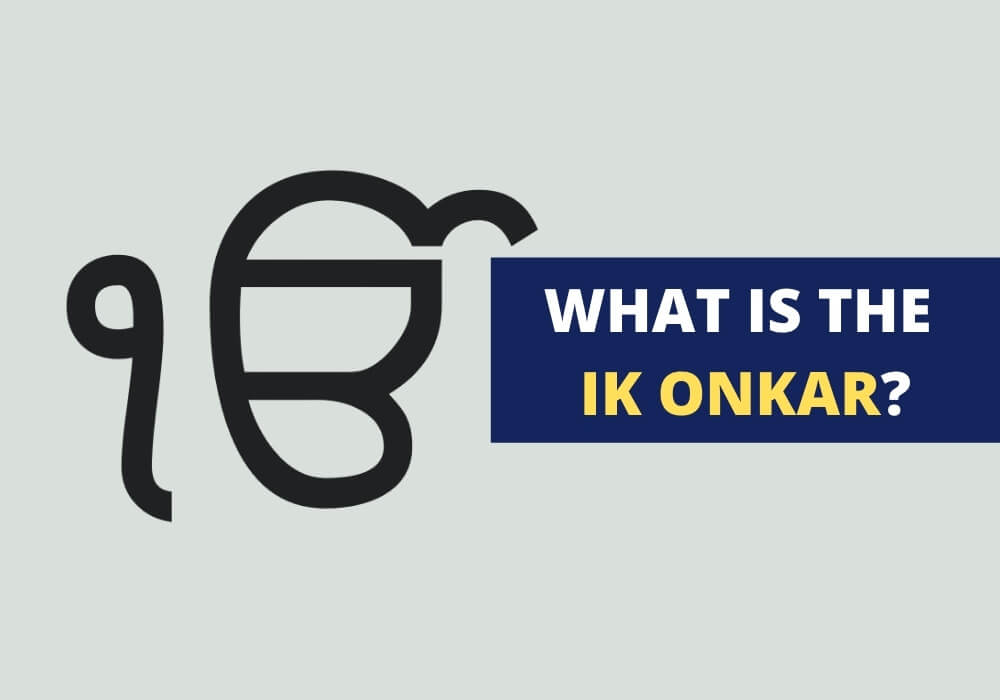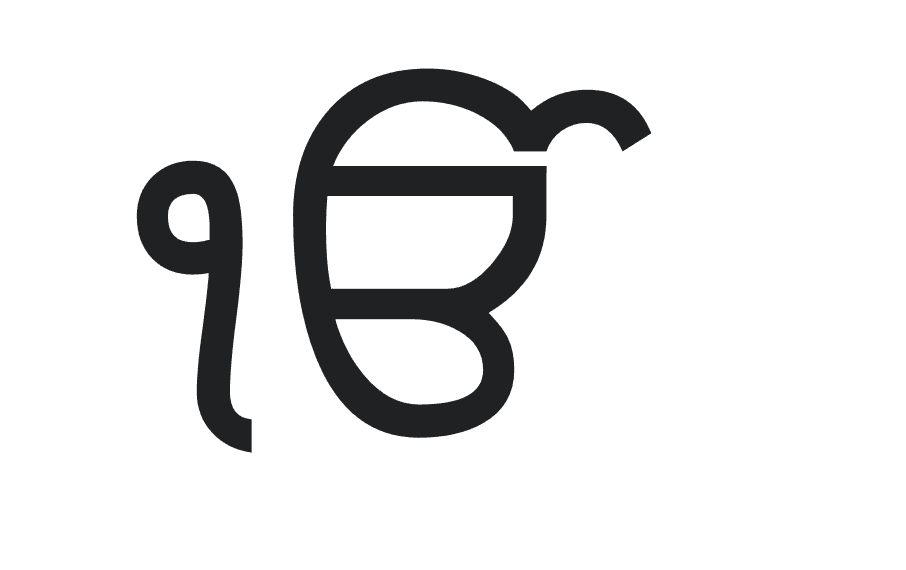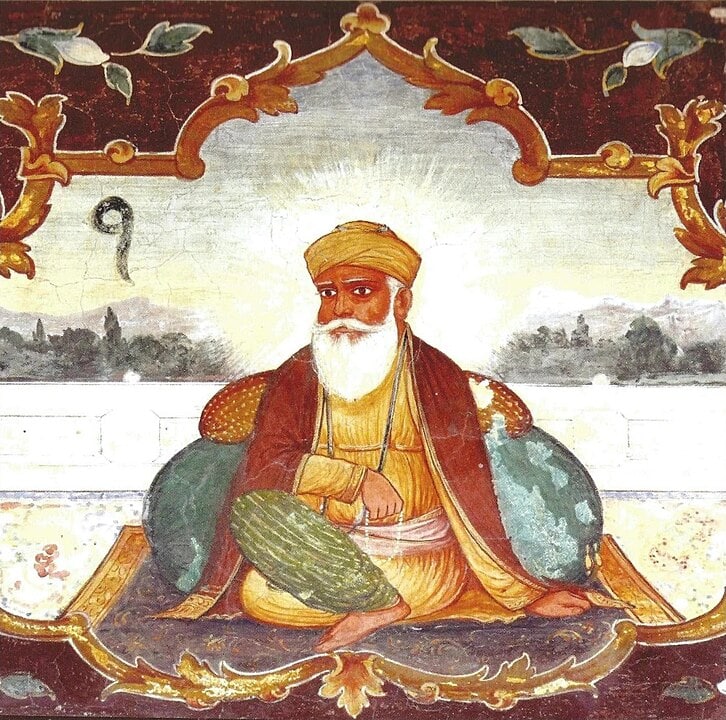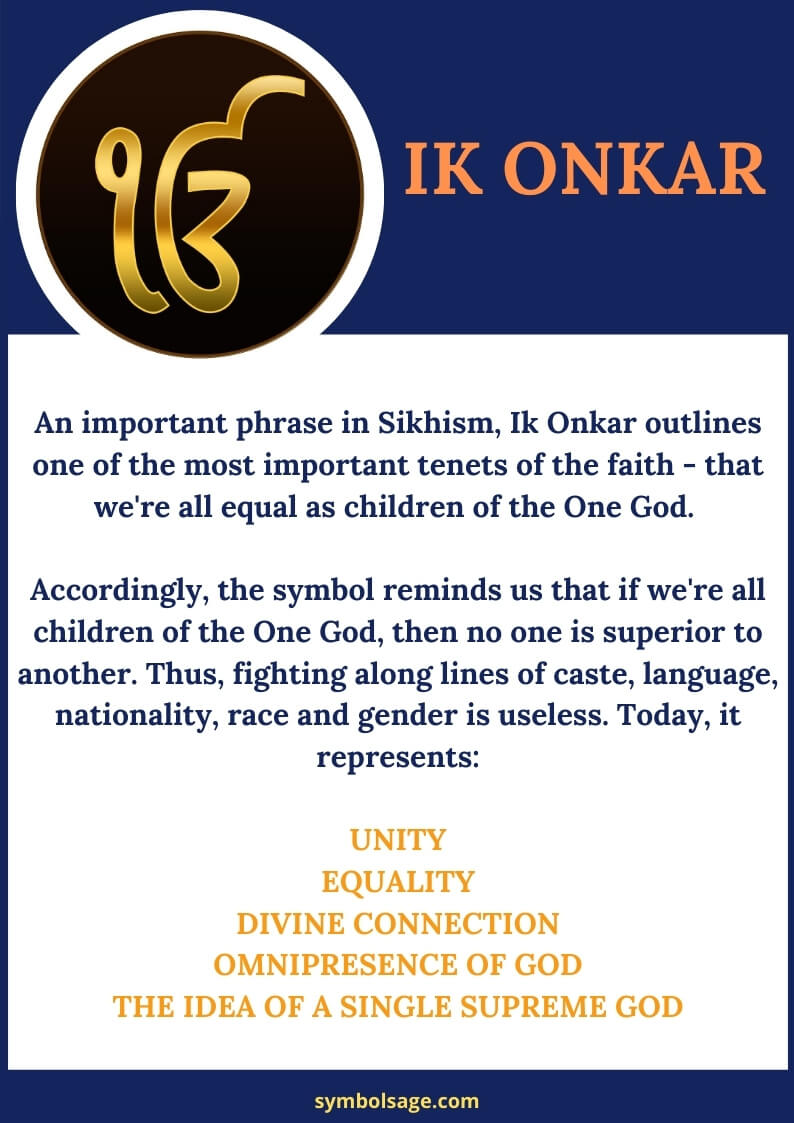
Table of Contents
The Ik Onkar, also written as Ek Onkar, is a phrase outlining one of the most important tenets of Sikhism. It can be seen on Sikh temples and even features as the first words of the Mul Mantar, the opening words of the holy scripture of the Sikh faith. The Ik Onkar is a revered Sikh symbol and phrase. Here’s why.
The Origins of the Ik Onkar

The Ik Onkar is interesting in that it wasn’t originally a symbol. It became a symbol over time as a representation of a major fundamental belief within the Sikh religion. To appreciate Ik Onkar, we need to get an understanding of how it originated and became the first words of the Mui Mantar, which is credited to Guru Nanak, the founder of Sikhism.
Guru Nanak, after hearing God’s calling to reach out to humanity while bathing in a river in 1487 AD, spent the next three decades proclaiming his new doctrine. Guru Nanak outlined that all humans are divinely connected as they’re all children of the same Supreme Being. As such, everyone is equal with no group being better than another. There is only One Supreme God and that is what the Ik Onkar emphasizes in the Mui Mantar.

Ik Onkar emphasizes the idea of a single Supreme Being. It reinforces the view that the divisions such as caste, language, religion, race, gender and nationality, are unnecessary as we all worship the same God. It signifies the idea that all humanity is one and that everyone is equal. The Ik Onkar can be taken as a symbol of unbroken and unhindered unity between all things and all people.
Another interpretation, looking at the construction of the Ik Onkar, comes from the three letters it’s made up of:
- Ek – which indicates “one”
- Om – the letter for God or an expression of the ultimate reality and consciousness of the divine
- Kar – the vertical mark over Om.
Together, it symbolizes unlimited time, continuity, and the omnipresent and eternal nature of God. Again, we find that Ik Onkar is seen to indicate the doctrine and belief of one God who is present through all of creation. There are different ways of experiencing the one God, but the result is the same.
A Deeper Meaning
Yet, the idea behind Ik Onkar extends to how we treat one another. If we see each other as part of the Divine, without separation by religious factions, then Ik Onkar symbolizes the love and acceptance we show towards each other.
We are all divinely united, not only to God but to humanity. God loves us all equally, so we should also demonstrate the same love.
Also, the symbol of Ik Onkar is seen to be a divine shield of protection, keeping you from harm and evil. It also represents the idea that having access to the one God who is in charge of all reality, can bring peace, harmony and success that you desire for your life.

Using the Ik Onkar As A Fashion Statement
The Ik Onkar is used on Sikh temples as well as some Sikh homes as a testament to their belief in the One Supreme God, so it should come as no surprise that you can find pendants, clothing and tattoos of the Ik Onkar as a similar way of declaring one’s faith.
As an item of fashion, it can also serve as a reminder of the divine blessings that are provided to you in your life.
However, because the Ik Onkar is a recognizable religious symbol and an aspect of the Sikh culture, it’s important to wear the symbol with respect for its meaning.
There are those who frown on the idea of using the Ik Onkar as a fashion item as they claim that the behavior of the person who is walking around with this symbol doesn’t match the devout religious lifestyle that they claim to represent.
Wrapping Up
Since the 15th century, Ik Onkar has become a symbol that acts as a reminder of the unity we have with the divine and with each other. It reminds us not to judge each other, but to accept and love one another.








